Summary: Daybreak offers a mail-in oral appliance therapy workflow that allows sleep physicians to keep sleep apnea patients in-house, reducing the need to refer them to local dentists for oral appliances. This service includes providing sleep tests, custom mandibular advancement devices, and ongoing patient care, with all aspects of the process handled by Daybreak’s team, enabling physicians to maintain visibility and oversight.
Challenge for Sleep Physicians: Sleep physicians sometimes fear losing patients when they refer them to other healthcare professionals, such as dentists, for alternative sleep apnea therapies when patients fail or refuse to use a CPAP.
Daybreak’s Solution:
A new company, Daybreak, allows sleep physicians to keep these sleep apnea patients in-house through a mail-in prescription oral appliance therapy workflow.

The Daybreak Workflow:
- Diagnosis:
- Sleep physician tests the patient for sleep apnea or Daybreak mails a home sleep test.
- Prescription:
- If diagnosed, the physician prescribes the Daybreak mandibular advancement device (US Food and Drug Administration-cleared for mild to moderate obstructive sleep apnea and snoring).
- Dental Impression:
- Daybreak provides a free dental impression kit to the physician.
- The patient can take impressions at home or in the physician’s office.
- Impressions are mailed via prepaid postage.
- Device Creation:
- Daybreak’s dental/orthodontic team analyzes the impressions.
- A DDS reviews the case and oversees the creation of the custom device.
- Delivery:
- Daybreak delivers the oral appliance. According to the company, the device comes at an optimal starting position for treatment.
- The kit includes adjustable bands to titrate and advance the appliance as needed.
- Billing:
- The physician bills for the device using code E0486.
Daybreak’s Role & Support:
- Back-End Care:
Daybreak manages everything after the patient receives the device, including:- Titration program (designed by maxillofacial surgeon Peter Balacky, DDS).
- Follow-up sleep testing to confirm device effectiveness.
- Regular patient check-ins and surveys.
- Information Portal:
All data is uploaded to a portal for the physician to maintain visibility.
Pricing Structure:
- Physicians pay Daybreak only after the patient receives the device.
- Daybreak handles manufacturing, fulfillment, and titration for a one-time fee.
- Free dental impression kits are provided to the physician’s office.
Key Benefit: Physicians can keep patients in-house, maintain control of treatment, and ensure proper follow-up care through Daybreak’s workflow.


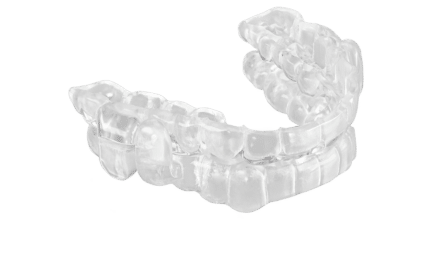

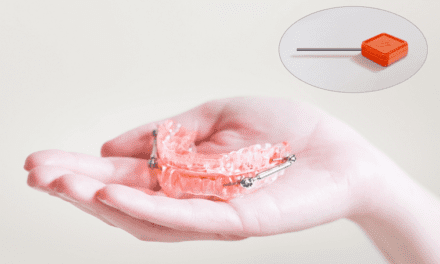

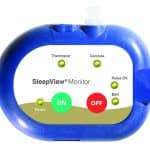


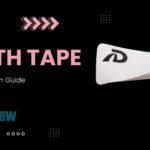
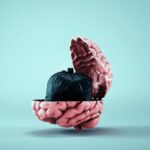
The future is here for Oral Appliance Therapy to treat OSA. Incredible.
Wow fantastic idea
Do sleep physicians realize patients will circumvent direct care and oversight by going directly to Daybreak, also leaving them out of the loop? And if the sleep physicians are involved, I hope they are comfortable with TMJ complications, bite changes, and crown removals. Finally, if they currently receive referrals from dentists for studies or PAP therapy, they can expect those to dry up.
100% behind you Kent. When they create dental issues who are they going to count on? Crickets!
Good luck with that. Just take a look at the lawsuits surrounding mail in orthodontic care.
Not sure how this will work – I see a number of sleep patients within my dental practice and work VERY hard at coordinating care with their physicians. I have come to realize the physicians in general know absolutely nothing about oral appliance therapy and rely heavily on my assessment, care, followup, etc with their patients. They don’t want to take ownership of what I do with appliances (and it’s not just a deliver and run type of treatment) and I don’t want to take ownership of what they do (nor can I). Building collaboration with your community is, in my opinion, the ONLY way to treat these patients. I’m worried about remote monitoring with just my own patients who need this aspect…. hope you have a GREAT legal team
For the life of me I am trying to figure out why physicians would want to directly treat patients with oral appliances. Are they going to do a complete dental exam on them to determine if they are even a possible candidate for oral appliance therapy? Are they going to be able to deal with all the possible problems, such as bite changes, tooth movement, TM joint pain and problems, teeth loosening if there is any periodontal problems, teeth breaking due to decay, crowns coming off, improper retention of the appliance, appliance breakage? How about followup as recommended by the AADSM and the AASM for effectiveness and usage?
From my experience the majority of the sleep physicians do not follow up with the CPAPs they prescribe for their patients.
The title of this article smacks of money only, not what is best for the patient receiving proper care from a trained dentist in sleep apnea. Even the photo used is taken from a dental lab that fabricates oral appliances for dentists, unless Daybreak has contracted with the lab to fabricate them for their use. If that is the case, then that lab runs the risk of losing business from their dentist clients in my opinion.
What is the priority here? The patient? If so, no one with a good conscience would be involved in this type of business model.
I could not be successful without coordinating care with my sleep physicians and they would agree that they do not have the expertise to provide oral appliances to their patients.
I don’t know a single dentist that would agree to patients taking their own outdated alginate impressions in their home. Nor would it provide a good model to fabricate an appropriate sleep apnea oral device.
Do you know how long it takes us as providers to train our staff on good impression taking?
This is a lawsuit waiting to happen. Look at Smile Direct Club.
I am concerned with a physcian clearing these patients for dental problems. Will they be aware of any issue contraindicating them getting an oral appliance? Will they check for decay and periodontal disease? And if they do make these devices, will these physicians follow the required 3 month of follow up with these patients to see if they are well treated, if they need any titration OR if they need the device trimmed properly to fit the teeth without causing pain or discomfort? They will be help to the same standard of care a dentist needs to since they will now take on all the liability a dentist would if they fabricated a device for their sleep apnea. And if there are issues during follow up, and a physician just tells them to see a dentist, I personally would not want to take this case on. I would tell them to have the doctor who created it to fix the problems they caused.
I am no electrician, but I don’t want to have someone mail me a home electric panel and tell me to install it myslelf so I don’t have to see someone who is an electician and do it for me. But that’s just me.
And if they send their patient to one of us to do this after they are adjusted, should we just tell the patient no, we are not responsible, tell that physician to work on it since they did all the work and got paid for it?
As a dentist who sees patients who have oral sleep apnea appliances, I can tell you that this is a very bad idea for patient care. There are many nuances to adjusting the appliances, to knowing what to do when a crown comes off, to figuring out if it’s the appliance that is hurting the patient or a tooth with an abscess..on and on. Lawsuits are going to arrive on your doorstep and fast! And let’s just talk about taking an impression. If it were so easy, then why go to dental school or dental assisting school to learn how to take one that isn’t distorted, etc. Do you really want to be responsible for goop going down a patients airway? Do you really want to be responsible for remakes and retakes? A disaster waiting to happen, is that you may be titrating but completely be at the wrong vertical setting. You may be unnecessarily moving the patient’s jaw forward. You may be creating TMJ issues because you didn’t pay attention to the way the patient’s jaw shifts when they protrude. You know..as the old saying goes…if it seems too good to be true, it probably is. There is NOTHING that will convince me that this is going to be better than a patient being seeing in person, under the care of a dentist who truly knows what is going on. You do realize that physician’s get less than one hour of instruction on the mouth in medical school?
I can see why this may seem positive. It’s true. It is way too difficult for a patient to make it through the referral pathway. I have worked on call for long term ICU hospitals and have been a place for ENTs to refer and one thing I’ve found is that the medical world is pretty hands off when it comes to the oral cavity. I’m surprised there are physicians that would even WANT to do this. Lastly, I don’t think this solves the problem of helping more patients. The patients we as a dental community are trying to help are the unaware and undiagnosed. Which means they aren’t seeking help from a sleep physician. This workflow is trying to bring the dentist to the sleep physician but that’s not where the bottleneck is. In all reality, the workflow would be best if the physician came to us. We should be WAY beyond impression material that the patient, not even the physically present physician takes. And WAY beyond the old school type of appliance that will be made. Unfortunately this is coming across as cutting corners because it’s trying to solve a problem we didn’t even have.
Several providers and manufacturers explored and tested this type of model during COVID, for all the obvious reasons. It was a massive failure. Do it yourself impressions had a huge error rate. The key mechanisms of action, of setting the jaw position and titrating correctly, was a cluster. Terrible experiences for all involved, most importantly the patient. I suggest reserving judgement on this approach until there is at least a shred of evidence suggesting that they’ve solved the myriad issues as mentioned in other comments.
It seems like a pretty cool concept. However. this appliance appears to be a bilateral traction device which puts the majority of the forces on certain teeth. Some patients will be better suited with a bilateral compression device or maybe an interlocking device. The type of device prescribed is specific to that patient. This takes away the quality of care that a patient deserves in exchange for convenience. This system omits very important assessments that need to be done prior to making an oral appliance (ie TMJ, muscles of mastication, periodontal health. acrylic type allergies, restorations, etc…).